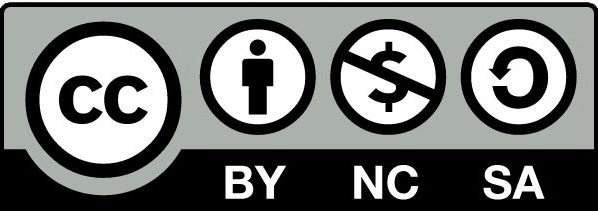U
ULD regulations: The ULD Regulations (ULDR) contains both technical and operational standard specifications and regulatory requirements as well as airlines requirements applicable to overall ULD operations. The creation of the IATA ULDR has involved extensive consultation and collaboration with all segments of the air cargo industry. The IATA ULDR replaces the former IATA ULD Technical Manual (UTM). The ULDR provides minimum standard specifications for designing and manufacturing ULDs that conform to IATA, ISO, SAE, and other national and international standards; essential and detailed guidelines for all aspects of ULD operations; training requirements and standards; and supporting material for airlines creating operations manuals containing ULD related content for use by their own or outside staff.
Uncertainty: Lack of certainty, a situation that involves imperfect and/or unknown information. Uncertainty is a state of having limited knowledge where it is not possible to exactly describe the existing state or more than one possible outcome. Risk and uncertainty are closely related, but slightly different concepts. They are both based on current lack of certainty in a potential fact, outcome or scenario and defined by probabilities and includes subjectivity since everything depends on how much we know about the fact, outcome or scenario.
M Mauboussin differentiates the uncertainty and risk with following definitions: Risk is when we don’t know what is going to happen next, but we do know what the distribution looks like; and uncertainty is when we don’t know what is going to happen next, and we do not know what the possible distribution looks like.
Uncertainty (of measurement): A parameter associated with the result of a measurement that characterises the dispersion of the values that could reasonably be attributed to the measurand. (JCGM/GUM 1995)
Undercooling: See supercooling.
Uniclass: Unified Classification for the Construction Industry, published in 1997 in the United Kingdom, is a classification scheme for the construction industry. It is intended for organizing library materials and for structuring product literature and construction project information.
Unit load device (ULD): A container used for consolidating and transporting cargo aboard aircraft. They are generally made of aluminium and/or fibreglass and configured to fit the geometry of an aircraft and are considered part of the aircraft frame. Large active systems fall into the category of ULD. There are two basic sizes classified by the airline industry: LD-3 and LD-9.
Airbus A300 fuselage cross-section, showing the passenger compartment above and LD-3 cargo containers below. On display at the Deutsches Museum in Munich, Germany (Asiir/Wikipedia)

Universal packaging solution: A shipping container whose proper performance does not require more than one packing configuration regardless of seasonal variants such as summer and winter or hot and cold exposure.
Uppsala Monitoring Centre (UMC): An independent foundation and a WHO Collaborating Centre for International Drug Monitoring and scientific research, located in Uppsala, Sweden. The first international drug monitoring centre was established by WHO after the thalidomide disaster, since 1978 the Programme has been carried out by UMC. The UMC works by collecting, assessing and communicating information from Member States national pharmacovigilance programmes in regard to the benefits, harm, effectiveness and risks of drugs and other substances used in medicine to improve patient therapy and public health worldwide. UMC is the custodian and manager of VigiBase, the WHO global database of more than 8 million reports of adverse reactions to medicines dating back to 1968 Its primary task is the collection, screening and analysis of reports of suspected adverse reactions to medicines and risks from over 100 member countries in the WHO Programme Its primary purpose is the detection and communication of emerging concerns about threats to the safety of patients to support good decision-making for the safer and more effective use of medicines UMC is the maintenance organization for WHO-ART (Adverse Reaction Terminology) and the WHO Drug Dictionaries, with more than 1,000 customers worldwide. For details see http://www.who-umc.org/
An independent foundation and a WHO Collaborating Centre for International Drug Monitoring and scientific research, located in Uppsala, Sweden. The first international drug monitoring centre was established by WHO after the thalidomide disaster, since 1978 the Programme has been carried out by UMC. The UMC works by collecting, assessing and communicating information from Member States national pharmacovigilance programmes in regard to the benefits, harm, effectiveness and risks of drugs and other substances used in medicine to improve patient therapy and public health worldwide. UMC is the custodian and manager of VigiBase, the WHO global database of more than 8 million reports of adverse reactions to medicines dating back to 1968 Its primary task is the collection, screening and analysis of reports of suspected adverse reactions to medicines and risks from over 100 member countries in the WHO Programme Its primary purpose is the detection and communication of emerging concerns about threats to the safety of patients to support good decision-making for the safer and more effective use of medicines UMC is the maintenance organization for WHO-ART (Adverse Reaction Terminology) and the WHO Drug Dictionaries, with more than 1,000 customers worldwide. For details see http://www.who-umc.org/
User requirement specification (URS): The attributes assigned by the user in advance of a qualification test to establish minimum performance limits. Sometimes referred to as a functional requirements document. (WHO)
Utilization factor: The percentage of the total volume available for storing TTSPPs that can reliably be achieved in practice, taking account of the types of stock-keeping unit, the types of load support system and the stock management systems used in the store. (WHO)
Utilization period: A period of time during which a reconstituted preparation of the finished dosage form in an unopened multi-dose container can be used. (WHO)


The users of this electronic publication are free to share (to copy, distribute, display and perform the work and make derivative works based on it only for noncommercial purposes); and to remix (to adapt the work) under the following conditions:
Attribution - The work must be attributed in the manner specified by the author or licensor (but not in a way that suggests that they endorse you or your use of work)